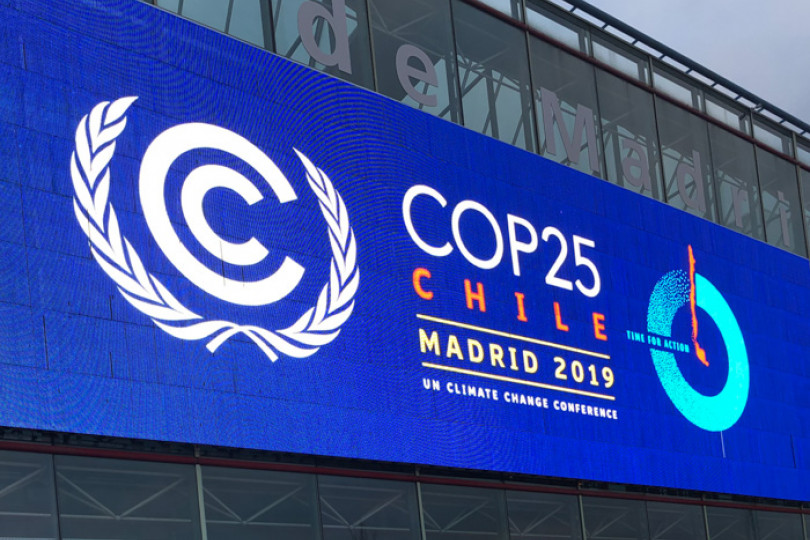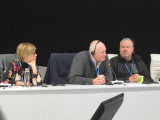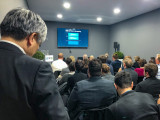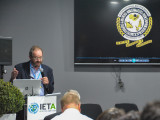Thousands of participants gathered in Madrid, Spain, from around the world to discuss climate change solutions during the United Nations’ COP25. (The event was moved from Santiago, Chile, to Madrid due to unrest in Chile.)
View Photo Gallery (5 photos)
A DELEGATION OF Boilermaker representatives was among tens of thousands of global participants and observers at the 2019 United Nations’ Climate Change Conference, COP25, in Madrid, Spain, this past December. In addition to Paris Agreement rules and actions negotiations—the event’s core mission—a wealth of substantive side events, sub-groups and exhibits created opportunities for some of the world’s premiere experts to exchange the latest climate-change information and technologies.
Two key subjects headlined the multi-week event: Carbon emissions trading systems (a major feature of negotiations, for which Boilermakers were not credentialed delegates) and so-called “just transition”—the term coined to describe re-training and reassigning fossil fuel industry workers to other industries and professions.
As part of an official Trade Union Non-Government Organization (TUNGO) sub-group, the Boilermakers delegation attended daily meetings with other trade union representatives to raise issues and ensure trade union voices were heard. In TUNGO discussions, it became clear that many union participants were prepared to embrace and deploy “just transition,” unaware of its potential negative impact to other unions, like the Boilermakers, mine workers and others who’ve honed their skills and grown their careers through well-paying jobs in the fossil fuel industries.
“The Boilermakers union has serious concerns about the devastation ‘just transition’ could have on our members’ lives,” Boilermakers Assistant International Director of Climate Change Policy Solutions Richard MacIntosh reminded TUNGO representatives. “We want to make sure that carbon capture, use and storage is brought to the forefront as the solution that can save our planet and our jobs.”
Additionally, the majority of conference speakers, side events and exhibits focused on renewables and “just transition” as the only solutions to climate change. Boilermakers seized opportunities to educate participants about carbon capture and connect with new allies in advocating for carbon capture technology scale-up.
Boilermakers, in partnership with the International CCS Knowledge Centre, hosted a packed-house side-event screening of “CCS: Bridge to a Cleaner Energy Future” followed by questions-and-answers in space provided in the conference’s main exhibit hall by the International Emissions Trading Association.
“Both the Mine Workers and the Boilermakers support the Paris Agreement as the central mechanism for addressing global climate issues on a multilateral basis,” said Eugene “Gene” Trisko, attorney with the United Mine Workers of America, in remarks after the film.
“The International Panel on Climate Change has recognized the critical need for CCS in the development of climate strategies to meet Paris targets. We also recognize that major CO2-reduction policies, such as ‘net zero GHG,’ can have significant adverse job impacts … In the U.S. alone, we estimate a total of 9 million jobs at risk.
“CCS can help to mitigate these job losses while contributing to fuel diversity and electric reliability.”
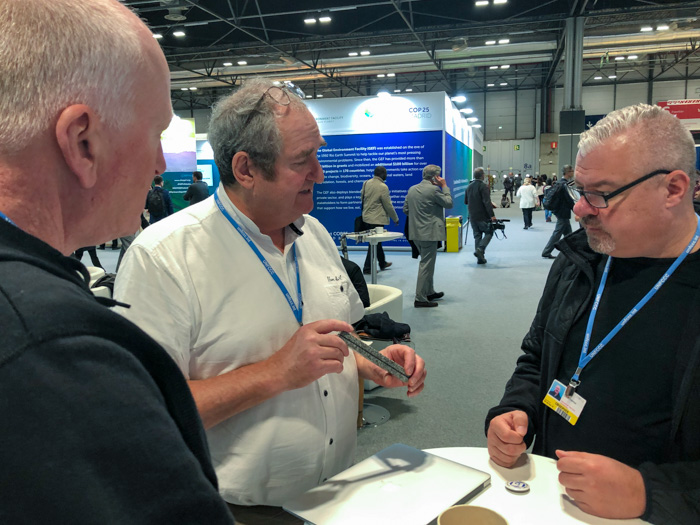 MacIntosh and Channon learn from German inventor and entrepreneur Kolja Kuse (center) about a carbon fiber-reinforced granite beam he created. Kuse’s company TechnoCarbonTechnologies is among those seeking to use captured carbon.
MacIntosh and Channon learn from German inventor and entrepreneur Kolja Kuse (center) about a carbon fiber-reinforced granite beam he created. Kuse’s company TechnoCarbonTechnologies is among those seeking to use captured carbon.
High-Tech company develops building material from captured carbon
GERMAN INVENTOR AND entrepreneur Kolja Kuse and his partner at TechnoCarbonTechnologies, Miguel Waschl, are among businesses with a unique interest in carbon capture, use and storage. Their focus is on the U in CCUS: Use.
Kuse has created a carbon fiber reinforced granite beam that’s as light as aluminum, flexible and can be used in place of steel. The technology is currently being used in high-end snow skis and high-end measurement equipment and also tested for building (though he says it can currently only be used for building up to 12 meters as they await certification for further use).
He notes among the advantages of using carbon fiber-reinforced granite: Carbon/granite beams can withstand more heat than can steel; carbon/granite beams don’t expand or rust; carbon/granite attenuates vibrations, which means they absorb and recover well from movement shock.
“Granite is a game changer and ideal for building in earthquake prone areas, in being reinforced with carbon fibers,” Kuse says.
In order to scale their operation, Kuse explains, they had to achieve carbon fibers made from CO2 identical to those made from petroleum. They established a perfect system to capture carbon through either algae or CO2 + H2, and which is technically 100% identical to petroleum-generated carbon fiber.
“This kind of usage can help overcome the public perception problem of CCUS,” Kuse says, “because we create great value."
“We won’t change with the flip of a switch,” adds Waschl. “We need a bridge—CCUS—so we can develop proper solutions and new technologies. And we’re making money, while we can address the needs of the Fridays For Future movement, because our approach is mentioned in one of the latest IPCC reports.”
